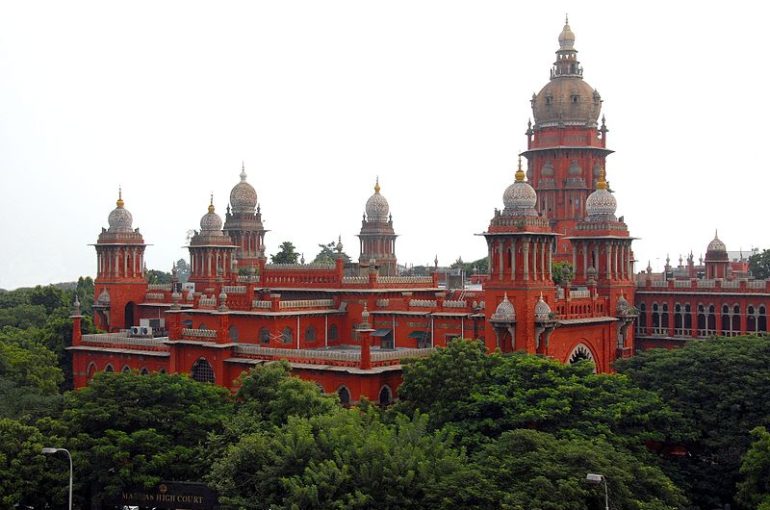THE CASTLE DOCTRINE IN INDIAN CONSTITUTIONAL LAW: LIMITS ON NOCTURNAL SURVEILLANCE OF HISTORY-SHEETERS

The Hon’ble Kerala High Court in the case of Prasath C. v. State of Kerala (Decided on 19.06.2025) (Decided by Justice V.G. Arun) held that Police authorities are not empowered to enter the homes of history-sheeters at odd hours under the guise of surveillance.
I. BRIEF FACTS
The Petitioner, Prasath C., a 47-year-old resident of Kochi, was booked by the Thoppumpady Police under Section 117(e) of the Kerala Police Act, 2011 for allegedly obstructing police officers from discharging their official duties. The incident occurred on 03 April 2025, during a late-night police surveillance operation targeting “Rowdy History Sheeters.”
According to the police report, officers arrived at the Petitioner’s residence at 1:30 a.m., directing him to open the door. The petitioner allegedly refused to comply and verbally abused the police, prompting the FIR.
In contrast, the Petitioner claimed the FIR was retaliatory, following his acquittal in a POCSO case, which he asserted was falsely foisted upon him by the same police station. After his acquittal, he had filed complaints against the Police before the State Police Chief. He also alleged frequent harassment, including traffic violation charges and night-time phone calls. On the night in question, he was first asked to wait outside his home (without any police presence) and was later summoned to the station and allegedly tortured. A Writ Petition alleging harassment was filed, leading to a Court-directed inquiry by the Home Department.
II. ISSUES OF LAW
- Whether the police are authorised to visit the residence of history-sheeters at night as part of surveillance activities.
- Whether a person’s refusal to open the door during nocturnal police visits, purportedly conducted under surveillance, amounts to obstruction of official duty under Section 117(e) of the Kerala Police Act, 2011.
- Whether such police actions are consistent with Articles 19 and 21 of the Constitution of India.
III. LEGAL REASONING AND FINDINGS
The Hon’ble Court quashed the FIR and all subsequent proceedings against the petitioner. The Court’s reasoning hinged on constitutional rights, police procedures, and authoritative judicial precedent.
- Kerala Police Manual and Its Limitations
The Court held that the Kerala Police Manual — specifically Paragraph 265 — only permits:
“Informal watching” of history-sheeters
“Close watch” on individuals leading a criminal existence
Nowhere do these guidelines authorise domiciliary visits at night. Moreover, the Manual is not a statutory instrument and does not carry the force of law.
- Right to Privacy and Dignity Under Articles 19 and 21
The Court drew from the Supreme Court’s landmark decisions in:
Kharak Singh v. State of U.P. (1962) — which struck down night-time domiciliary surveillance under the U.P. Police Regulations as unconstitutional
K.S. Puttaswamy v. Union of India (2017) — which had recognised right to privacy as a fundamental right which was protected by the Constitution and expanded the interpretation of ‘personal liberty’ and ‘life’ under Article 21 to encompass dignity, autonomy, and the sanctity of private space
The Court affirmed that even suspected or labelled persons enjoy these protections unless due process authorises otherwise.
- Lack of ‘Lawful Direction’ Under Section 117(e)
Section 117(e) penalises disobedience of lawful directions issued by the police. However, the Court held:
Knocking at the door of a history-sheeter at midnight and demanding compliance is not a “lawful direction.”
Thus, the refusal to open the door cannot be considered an obstruction of duty.
Even if the petitioner abused or threatened the police, it may constitute a different offence, but not under Section 117(e).
IV. ANALYSIS
This Judgment is significant in its affirmation of constitutional protections even for those with criminal histories, reinforcing several foundational principles:
- Constitutional Supremacy Over Administrative Convenience
By rejecting actions not grounded in statutory authority, the Court emphasized that administrative practices cannot override fundamental rights — especially when they concern privacy and liberty.
- Limits on Preventive Policing
The Judgment acts as a brake on unchecked preventive surveillance, particularly nocturnal intrusions that are not backed by law or judicial orders.
- Sanctity of the Home as a Legal and Moral Space
The Court’s reiteration that a home is more than a structure — it embodies emotional, existential, and social dimensions — strengthens the jurisprudence around spatial privacy.
- Protection Against Retaliatory State Action
Although not directly ruling on malice or retaliation, the Court’s quashing of the FIR indirectly signals that law cannot be used as a tool of reprisal, especially when the accused has invoked legal remedies against the state.
V. CONCLUSION
The Kerala High Court’s decision in Prasath C. v. State of Kerala underscores that the designation of a person as a ‘history-sheeter’ does not extinguish their fundamental rights under the Constitution. It also marks a strong judicial stance against overreach under the guise of surveillance, particularly when it involves night time incursions into the home.
By setting aside the FIR under Section 117(e), the Court has not only protected an individual’s right to dignity and privacy but has also recalibrated the relationship between surveillance and civil liberties. The message is clear: no citizen — whether accused or acquitted — forfeits the protections guaranteed under the Constitution.
SARTHAK KALRA
Senior Legal Associate
The Indian Lawyer & Allied Services
Please log onto our YouTube channel, The Indian Lawyer Legal Tips, to learn about various aspects of the law. Our latest Video, titled Uniform Civil Code Explained | Pros, Cons & Constitutional Perspective | Advocate Sushila Ram Varma| can be viewed at the link below:





































Leave a Reply